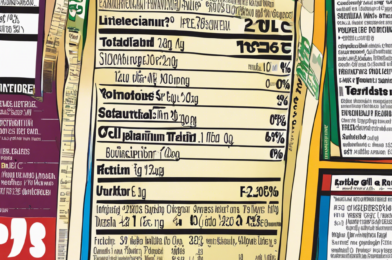Cooking at home is an easy way to take control of your health, your budget, and your taste buds! It’s a great way to know exactly what you’re eating and save money. Plus, home cooking can be delicious and easy with the right recipes. So, whether you’re a novice chef or a seasoned pro, read on for some inspiring ideas to get you started.
First, let’s talk about the benefits of cooking at home. When you prepare your own meals, you have complete control over the ingredients used. This means you can ensure that your meals are made with fresh, healthy, and nutritious ingredients, avoiding the excessive salt, sugar, and unhealthy fats often found in restaurant or processed foods. Cooking at home is also significantly cheaper than dining out or ordering takeout. By buying ingredients in bulk and cooking in larger batches, you can save money and always have healthy, homemade meals ready to go.
Another advantage is the environmental impact. Cooking at home tends to produce less waste, as you’re not generating the packaging and containers associated with takeout or pre-packaged meals. Plus, you can support local farms and reduce the carbon footprint of your food by sourcing local and seasonal ingredients.
Now, let’s tackle the ‘I don’t have time’ objection. Healthy cooking doesn’t have to mean spending hours in the kitchen. With the right recipes and a bit of planning, you can create delicious and nutritious meals in the same amount of time it takes to order takeout.
So, where do you start? Begin by finding simple recipes that you can make with ingredients you already have or that only require a small number of additional items. One-pot meals, such as stews, curries, and pasta dishes, are great options as they require minimal preparation and produce little waste. You can also try meal prepping on weekends so you have ready-to-go meals during the week.
To make things even easier, stock your pantry with healthy basics like whole grains, tinned beans and tomatoes, and healthy oils. That way, you’ll always have the foundation for a quick and nutritious meal. Finally, don’t be afraid to experiment and have fun! Try new ingredients and recipes to keep things exciting. You’ll be surprised at how easy it is to create delicious, restaurant-quality meals at home. Happy cooking!
To sum up, cooking at home offers numerous benefits, from improved health and savings to reduced environmental impact. By taking control of your ingredients and meal preparation, you can ensure nutritious and delicious options for yourself and your family. So, start with simple recipes, stock your pantry with healthy basics, and don’t be afraid to experiment. With a bit of planning and creativity, you’ll be whipping up mouthwatering meals in no time, all while taking care of your health and wallet.
I hope you found this article helpful and inspiring! For more ideas, be sure to check out our website, where we share quick and healthy recipes perfect for busy individuals and families. Happy cooking and healthy eating! Remember, taking small steps towards healthier habits can lead to significant long-term benefits.



